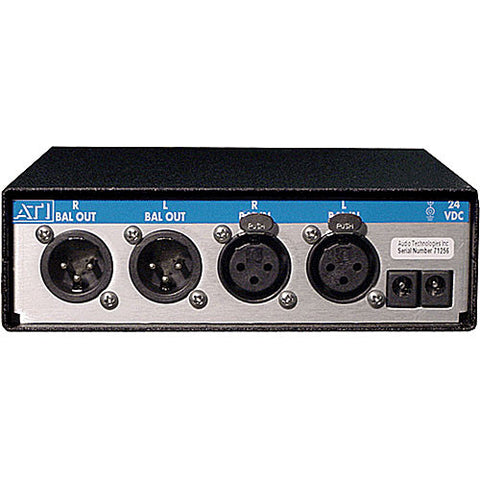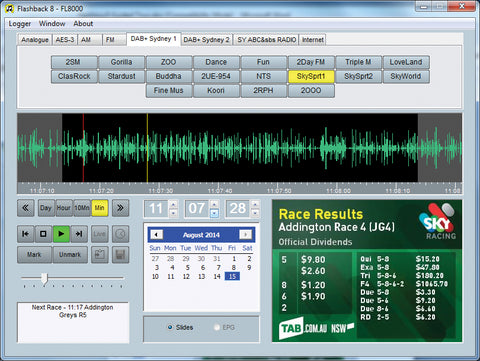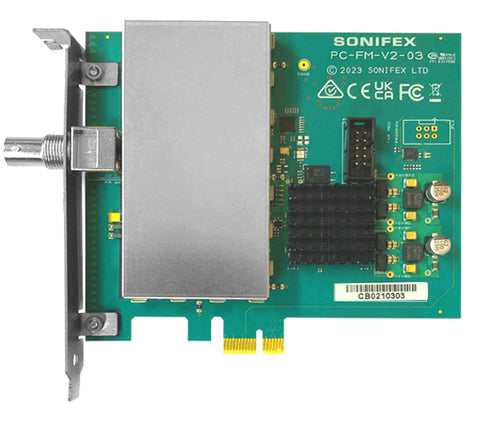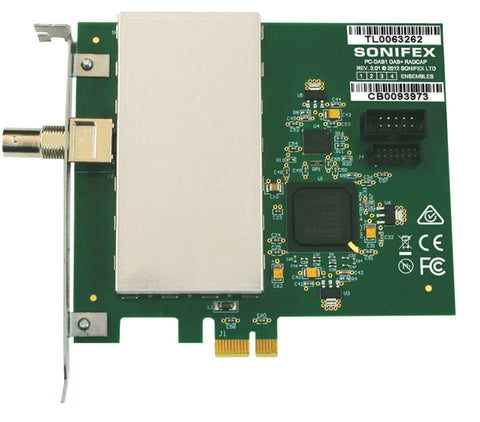Sonifex RB-AEC Acoustic Echo Canceller
The RB-AEC 1U rack-mount is an acoustic echo canceller that is mainly intended for use by radio and television studio staff. The control room microphone(s) may pick up the studio presenter's microphone signal when it is played back through a monitor speaker, returning the unwanted echo to the presenter's earpiece. When green screen video processing is occurring, there may be a delay of more than 200 ms. The size, occupancy, and distance between the mouth and the microphone can also have an impact on the echo. By adjusting to the location of the control room microphones, the RB-AEC is utilized to exclude the whole control room monitor speaker output from the presenter's feed. While telephony systems tend to use acoustic echo cancellation more frequently, the Sonifex RB-AEC is made to provide broadcast-quality cancellation.
Similar to a conference call setup between two rooms, there are microphones and speakers in each room for conducting talks. There is a delay between when someone speaks in one room and when they are heard in the other. If a suitable solution isn't found, the second room's microphone may pick up this "delayed" signal and reflect it to the first room. In the specific instance of TV production, sound reflections from the control room monitor speaker into the control room microphone(s) result in additional delay for the studio earpiece in addition to the processing/transmission delay. The control room's furnishings, including any people that may be there, affect how sound reflects into the space. Additionally, different frequencies result in varied reflections on different kinds of surfaces and at different sizes in the space. The delay can reach 40 ms when the speaker and microphone are 15 m apart. The RB-AEC's DSP solution can dynamically adjust for different configurations.
Operation of the RB-AEC
The post-processed transmission output program from the studio (A) is sent to the RB-AEC as an analog or digital audio signal (the stereo input is auto-sensing) which acts as a mix-minus to the input signal (B) from the Control Room. The RB-AEC removes the unwanted acoustic echoes so that the audio sent to the presenter’s earpiece (C) is free of echoes and reflection artifacts.
Applications
How to Remove Delayed Presenter’s Audio From Their Earpiece
The Problem:
Microphone audio from the presenter(s) is played aloud in the control room/gallery, where a live microphone allows the director to talk to the presenter(s) via their earpiece(s). This live microphone also inadvertently picks up the presenter’s microphone audio and feeds it back to them in delay, causing a disconcerting self-echo in their earpiece.
The Solution:
- Connect the director’s microphone signal (at line level) to the RB-AEC near-end input.
- Connect the gallery monitor signal (at line level, containing the presenter’s microphone audio) to the RB-AEC far-end input.
- Connect the RB-AEC output(s) to the presenter’s earpiece(s). Turn on the RB-AEC.
- Allow the presenter(s) to talk for 1 minute without the director using their microphone (though it must still be active). The RB-AEC will learn the environment and the echo will gradually disappear from the presenter’s earpiece(s). The coefficients are stored and loaded on power-up. This process will not need repeating unless the environment changes.
How to Remove Delayed Caller Audio From The Telephone Line
The Problem:
Caller audio from the telephone hybrid is played aloud in the TV studio, where live microphones are fitted to presenters and guests (boundary microphones may also be present). These live microphones also inadvertently pick up the caller’s audio and feed it back to them in delay, causing an undesirable self-echo.
The Solution:
- Connect the mixed studio microphone signal (at line level) to the RB-AEC near-end input.
- Connect the TBU output to the RB-AEC far-end input.
- Connect the RB-AEC output(s) to the hybrid’s input (inline mode). Turn on the RB-AEC.
- Make a test call and allow the caller to talk for 1 minute, their voice played aloud through the studio monitor and being picked up by all studio microphones (which should be in position and active but not being used). The RB-AEC will learn the environment and the echo will gradually disappear from the phone line. The coefficients are stored and loaded on power-up. This process will not need repeating unless the environment changes.
Audio Specification |
|
| Audio Input (Program): | 1 x mono analogue or AES/ EBU digital on XLR 3-pin female (autoselecting) |
| Audio Input (From Control Room) | 1 x mono analogue or AES/EBU digital on XLR 3-pin female (autoselecting) |
| Max Level (0dB Input Gain): | +18dBu (analogue)/0dBFS (digital) |
| CMRR: | >60dB typical |
| Input Impedance: | 20kΩ (analogue) 110Ω (digital with termination switchable) |
| AES/EBU Input: | 32kHz to 192kHz |
| Input Gain: | 0, +6, +12 or +18dB digital gain (switchable) |
| Audio Outputs (Analogue): | 2 x mono analogue on XLR 3-pin male |
| Audio Outputs (AES/EBU): | 1 x stereo digital AES/EBU on XLR 3-pin male |
| Maximum Output Level: | +18dBu (analogue)/0dBFS (digital) |
| Output Impedance: | <50Ω (analogue)/110Ω (digital) |
| AES/EBU Output Sample Rates: | Selectable 32kHz - 192kHz |
| Distortion: | <0.02% (1kHz, +8dBu output) |
| Noise: | -84dB RMS, unity gain ref +8dBu output |
| Frequency Response: | 20Hz-12kHz +0/-0.5dB |
| Rejection Ratio (Input to Output): | Typically 20dB on complex waveforms, reference peak level of 0dB |
| Remote I/O Port: | 9 way D-Type socket |
| Ethernet Port: | 1 x RJ45 with status LEDs |
| Mains Input: | Filtered IEC, continuously rated 85 264VAC @ 47-63Hz, 10W max |
| Fuse Rating: | Anti-surge fuse 1A 20 x 5mm |
| Maximum Delay: | 16kHz – 250ms 24kHz – 120ms |
Controls |
|
| Configuration: | 1 x Ethernet port and 1 x rear panel 4-way dipswitch |
| Reset: | 1 x front panel recessed button |
Equipment Type |
|
| RB-AEC: | Acoustic echo canceller |
Physical Specification |
|
| Dimensions (Raw): | 48cm (W) x 10.8cm (D) x 4.2cm (H)(1U) 19” (W) x 4.3” (D) x 1.7” (H) (1U) |
| Dimensions (Boxed): | 58.5cm (W) x 22.5cm (D) x 7cm (H) 23” (W) x 8.9” (D) x 2.8” (H) |
| Weight: | Nett: 1.5kg Gross: 2.0kg Nett: 3.3lbs Gross: 4.4lbs |
 USD
USD EUR
EUR
 AUD
AUD
 GBP
GBP
 JPY
JPY
























